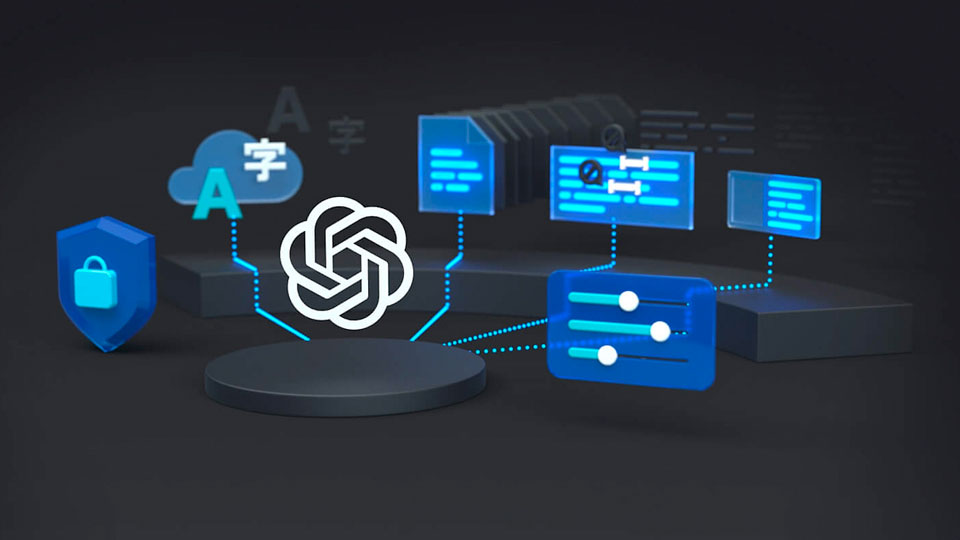Artificial intelligence (AI) is transforming the way we live and work, and the Azure OpenAI Service is a game-changing cloud-based offering that puts the power of AI in the hands of developers and data scientists. In this blog, we’ll explore the features and benefits of the Azure OpenAI Service, and how it can help businesses build intelligent applications that deliver value to their customers.
What is the Azure OpenAI Service?
The Azure OpenAI Service is a cloud-based offering by Microsoft Azure that provides access to OpenAI’s state-of-the-art AI models and tools. OpenAI is a leading research organization that focuses on advancing AI in a safe and responsible way, and the Azure OpenAI Service provides developers and data scientists with easy access to OpenAI’s powerful natural language processing (NLP) models, as well as other machine learning models such as image recognition, language translation, and more.
Features and Benefits of the Azure OpenAI Service
The Azure OpenAI Service offers a range of features and benefits that make it a powerful tool for building intelligent applications, including:
Pre-trained AI models: The service offers a variety of pre-trained models that can be used for a wide range of applications, including language understanding, text summarization, sentiment analysis, chatbots, and more. These models are trained on large datasets and provide high levels of accuracy and performance.
Customizable AI models: In addition to pre-trained models, the Azure OpenAI Service provides a suite of tools and APIs that enable developers to customize and train their own AI models using their own data. This allows businesses to create AI models that are tailored to their specific needs and use cases.
Scalability: The Azure OpenAI Service is designed to scale to meet the needs of businesses of all sizes, from small startups to large enterprises. The service can handle large amounts of data and can be scaled up or down as needed to meet changing demand.
Integration with Azure services: The Azure OpenAI Service integrates seamlessly with other Azure services, such as Azure Cognitive Services and Azure Machine Learning, making it easy for businesses to build end-to-end AI solutions using a range of tools and services.
Secure and compliant: The Azure OpenAI Service is built on Azure’s secure and compliant infrastructure, which means that businesses can trust that their data and applications are protected at all times.
Use Cases for the Azure OpenAI Service
The Azure OpenAI Service can be used for a wide range of applications across a variety of industries, including:
Customer service: The service can be used to build intelligent chatbots that can understand natural language and provide personalized responses to customers.
Healthcare: The service can be used to analyse medical records and images, and to assist with diagnosis and treatment planning.
Finance: The service can be used for fraud detection, risk assessment, and other applications that require large amounts of data analysis.
Marketing: The service can be used to analyse customer sentiment and behaviour, and to deliver personalized marketing messages and recommendations.
Conclusion
The Azure OpenAI Service is a powerful cloud-based offering that puts the power of AI in the hands of developers and data scientists. With its pre-trained AI models, customizable AI models, scalability, integration with other Azure services, and secure and compliant infrastructure, the Azure OpenAI Service is a game-changing tool for businesses looking to build intelligent applications that deliver value to their customers.
References
- https://aka.ms/oai/access
- https://learn.microsoft.com/azure/cognitive-services/openai/whats-new
- https://oai.azure.com/
- https://pypi.org/project/openai/
- https://blogs.microsoft.com/blog/2023/01/23/microsoftandopenaiextendpartnership/
- https://azure.microsoft.com/en-us/blog/chatgpt-is-now-available-in-azure-openai-service/
- https://azure.microsoft.com/en-us/blog/general-availability-of-azure-openai-service-expands-access-to-large-advanced-ai-models-with-added-enterprise-benefits/




